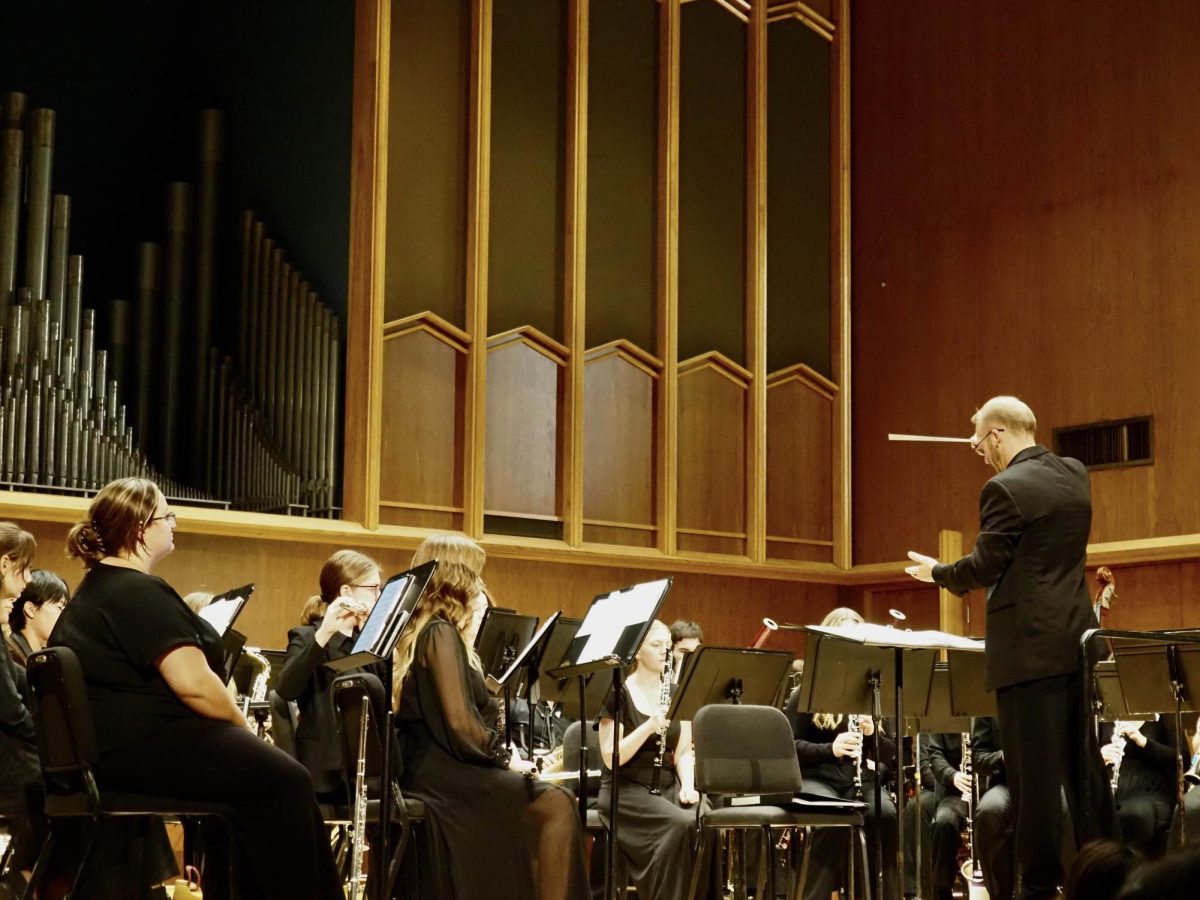As Phase 3 students flock back to campus, one poster board standing just between the Alton and Lydia Lim Center for Science, Technology and Health and Crowell School of Business stands out. Promising old Hollywood architecture, a 300-seat theater and space for the new game design program, the timeline for breaking ground on the ambitious new CMA building is still undecided.
WHAT STUDENTS CAN EXPECT
The new building will incorporate glamour, yet prioritize function, giving students and faculty much needed space for the growing department. Three stories spanning 56,000 square feet will house new foley studios, a 300-seat screening theater, a 3,000-square-foot soundstage, a student café and plaza, editing bays, computer labs, classrooms, motion capture and scoring stages.
“It’s designed to contain all aspects of the production process from idea generation to pre-production, production, post-production and ultimately the exhibition of students’ work,” said Tom Halleen, dean of the cinema and media arts department, in an email statement. “It provides CMA with well-needed space for faculty and staff, additional classrooms and conference rooms, as well as a place for students to socialize together in the café.”
There are also many plans to upgrade the current Production Center, increase the amount of equipment and build a new equipment room in a stand-alone building next to the building.
BUDGET AND BUILDING
According to The Hollywood Reporter and Adam Morris, executive vice president and chief transformation and advancement officer, the projected budget is $76 million, of which $10 million have been raised. This building will be funded solely through donor support.
“We’re finding that folks in the donor community continue to be incredibly generous.” Morris said.“When COVID hit and there was mass unemployment and people being furloughed and losing jobs. In our experience at Biola, we’re not seeing that same effect on donations.”
Though Biola is facing lower enrollment this year, which accounted for just over 66% of the university’s income for the fiscal year of 2019-2020, Vice President of University Operations and Finance Michael Pierce noted that the university still aims to provide a rounded education, which includes building projects like these.
“It’s a balancing act for us on an annual basis to be able to balance affordability [with] declining enrollment [and]…making sure you get those facilities…like a new CMA building,” Pierce said. “All for you to be able to really learn the skills that you need, engage in the relationships that you need, and to go out into the world to impact it for Christ.”
“TRIFECTA OF INFLUENCE”
Situated adjacent to the Crowell School of Business and next to the Lim Center, the new Production Center symbolizes the balance of education Biola provides in a liberal arts program—maybe even exemplifying the school motto, “All as One.”
“What I love most about it is not just the fact that its cinema-media arts, it’s the fact of what it represents between the many disciples here at Biola,” Halleen said. “When you think about standing on the street, and you look into what it will become, it’s a very powerful image of this integration…that makes up the liberal arts experience within the whole Biola degree.”












